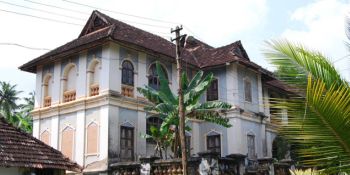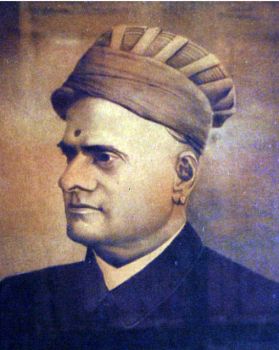|
Missing Raja Ravi Varma Paintings: Kerala HC
seeks state's views
Kochi: The Kerala high court has sought the state government's
views on a petition seeking a CBI probe into the reported disappearance
of some original paintings of Raja Ravi Varma, classical Indian
painter from the state.
A direction in this regard was issued yesterday by a division
bench, comprising acting chief justice Kurian Joseph and justice
PR Raman on a petition filed by Archana Narayanan, advocate and
great grand-niece of Raja Ravi Varma.
The petitioner submitted that as per records of the Kilimanoor
Palace, over 75 paintings had been handed over to the then government.
But only 55 had been exhibited at the Thiruvananthapuram-based
Sree Chitra Art Gallery, managed by the Directorate of Museum
and Zoo.
She alleged that some private art galleries had openly auctioned
Varma's masterpieces without prior permission from the Archaeological
Survey of India.
Though an inquiry was conducted earlier on a petition filed by
a relative of the petitioner, the report was "vague"
and "contradictory", Narayanan pointed out and sought
a CBI probe.
The petitioner alleged that Indian art treasures were freely
put on auctions abroad. To prevent such illegalities, the CBI
should be directed to seize works of Varma from those who indulged
in such smuggling, she said.
http://www.dnaindia.com/india/report_missing-raja-ravi-varma-paintings-kerala-hc-seeks-state-s-views_1344028
Legacy of artistic splendour
Raja Ravi Varma's works continue to charm art lovers…but
how well has his legacy been preserved, asks K. KUNHIKRISHNAN.

Rich Heritage:The Kilimanoor Palace in need of restoration
Raja Ravi Varma's (1848 – 1906)' paintings fetch amazing
prices in the art market a century after his death. He accomplished
a union of the Indian tradition with the techniques of European
academic art and created a revolution in modern aesthetics. He
was accused of being a mere illustrator and calendar artist, or
an unimaginative copier of European techniques. The Indian public,
however, never rejected him and he is adored as an old master
pioneering the best form of fine art. The National Museum, New
Delhi, in collaboration with various agencies conducted an exhibition
of his paintings and brought out Raja Ravi Varma: New Perspectives.
Incredible sales
The increasing value of Ravi Varma paintings at auctions is testimony
to his growing popularity. In 1997, at Osian's art auction in
Mumbai, the painting, "Begum's Bath" fetched a prize
of Rs. 32 lakhs (bought by Parmanand Patel). At the Bowrings Fine
Arts auction at Delhi, the painting "Shakuntala Patralekhan"
was sold at Rs. 36 lakhs in 2002, and "Yashoda and Krishna"
(Oil on canvas) fetched Rs. 56 lakhs, a record price sold for
any painting in India. At the same exhibition Nicholai Roerich's
"Himalayan Series" went for Rs. 15 lakhs. In October
2007, Bonhams, the UK auctioneers sold off an oil on canvas painting
for a price of UK Pound Sterling 602400 (nearly Rs. 5 crores)
to Neville Tulli, Chairman of Osians, an auction house in Mumbai.
The painting depicts the then Maharaja of Travancore and his younger
brother welcoming Richard Temple Grenville, third Duke of Buckingham
and Chandos, Governor General of Madras(1875 -80) on his official
visit to Trivandrum in 1880. Reproductions of Ravi Varma paintings,
are on sale on websites, for costs ranging from US $ 199 to 599.
Ravi Varma was the first Indian painter to use models to depict
Hindu Gods and Goddesses and the first to make available his paintings
to the masses through reproductions. The paintings played a great
role in popularizing the sari as a national dress as his Goddesses
are all sari-clad. During his life time Ravi Varma is believed
to have produced more than 7,000 paintings and a large majority
of them are untraceable.
Even at a time when travel was hazardous, he travelled extensively
and took up large commissioning. His paintings are kept in various
museums. Documentations in English and Malayalam are available
including biographies, monographs, novels, Bollywood films, videos
( the one made by Vinod Mankara won laurels in Kerala.)
The legacy of Ravi Varma raises many posers. There is still no
memorial in his name. The Kilimanoor Palace, 36 km from Thiruvananthapuram
where Ravi Varma was born and initially groomed by his maternal
uncle, has a constant flow of visitors from all over the country,
many from outside the state. But there is not a single original
painting even at the Studio spot that he used. There are more
than 230 family descendants and many live in the complex. The
family assets are tangled and provide suitable alternate living
amenities for the families is a complex issue. Part of the palace
is in a shambles and a Ravi Varma Memorial, as a global heritage
spot, is the need of the hour. Concerted efforts to preserve the
heritage of Ravi Varma are lacking and lackadaisical steps have
been futile.
At Mavelikkara, 120 km from Thiruvananthapuram, where Ravi Varma
spent time with his wife Princess Bhagirathy and painted, there
is the Raja Ravi Varma College of Fine Arts, originally started
by Rama Varma, ( his son, and after the death of his brother Raja
Raja Varma, his closest assistant) In 1956, it was taken over
by the Government of Kerala. It is one among the three Colleges
of Fine Arts. Forty students are taken in annually for training
in painting, sculpture and fine arts, leading to a BFA degree.
There are no special studies on Ravi Varma and the families of
his descendants are not involved in the running of the college.
More than 70 direct descendants of Ravi Varma live at Mavelikkara
and there is no memorial there.
Portrait of a masterRavi Varma.

Meagre balance
At Thiruvananthapuram, the Kaudiar, Pattom and Rangavilasam Palaces,
possess just seven of the main paintings as part of the royal
legacy. One memberof the Kilimanoor family also has a few original
paintings.
The Sree Chithra Art Gallery of the Thiruvananthapuram Museum
has 43 originals of Ravi Varma. There are also nearly 100 pencil
sketches. The gallery has some of the last and unfinished paintings
of the maestro like Mysore Khedda.
The walls of the unassuming gallery adorn "Draupadi in Virata
Court", "Mohini and Rugmangada", "Hamsam and
Damayanthi", "Judith," "Rama breaking the
bow", "Shakunthala", "Jadayu Seethapaharan",
and "Udaipur Palace". About 2000 visitors turn up daily
to witness the paintings, according to the caretaker Mr. Natrajan.
"The mismatch between the modesty of its appearance and
the worth of its holdings is too stark for anyone to miss, as
if it were a calculated strategy by some perverted security genius
to underplay its value," comments K Jayakumar, poet and senior
bureaucrat, which best summarises the pathetic plight of Ravi
Varma Gallery in Thiruvananthapuram. This leaves a lot to be desired.
In 1905, Raja Ravi Varma sold his entire property including land,
Press, paintings, prints, litho stones and other accessories to
his trusted German technician, Fritz Schleicher, who continued
the work of the Ravi Varma Press. Later they totally disintegrated.
Realising the value of the archival materials and their potential
for educating the people, Vijaynath Shenoy's Hastashilpa Trust
in Manipal acquired all the materials connected with the printing
process of the works of Raja Ravi Varma from the owner of the
Press and set up the Museum.
The museum display in 2500 square feet, includes machinery used
for printing process, 150 litho stones with the impressions of
the works of Ravi Varma, packets of special colour ink powder
made in Germany for reproduction, scores of original colour prints
of Ravi Varma's, paintings of varying sizes, sketches and drawings,
printing accessories, work sheets, and account books and other
documents used in the Ravi Varma Press.
http://www.hindu.com/mag/2010/02/07/stories/2010020750180500.htm
|